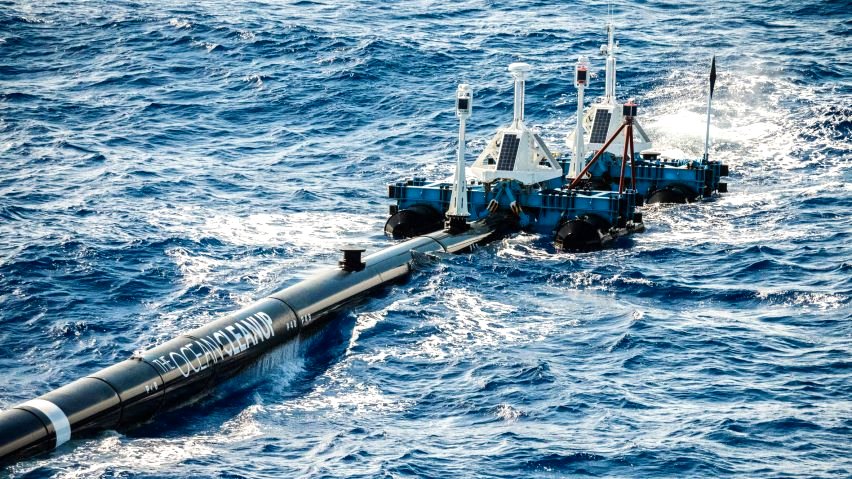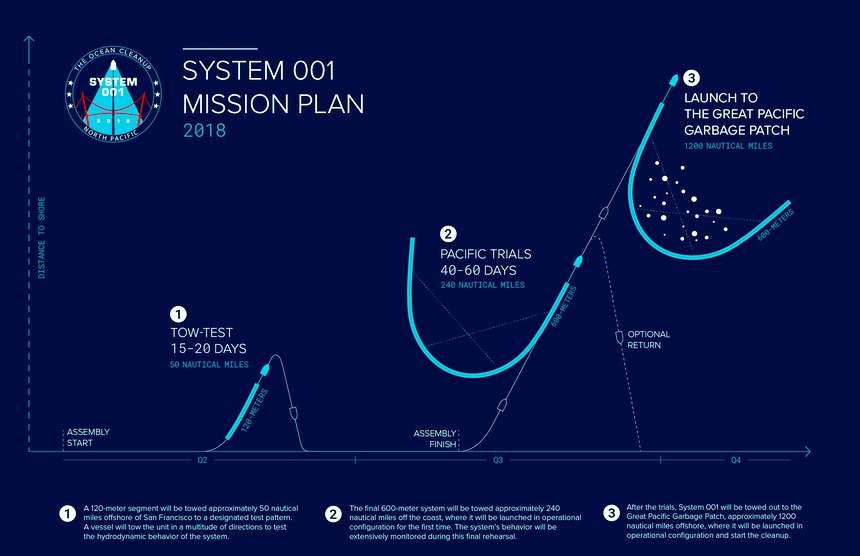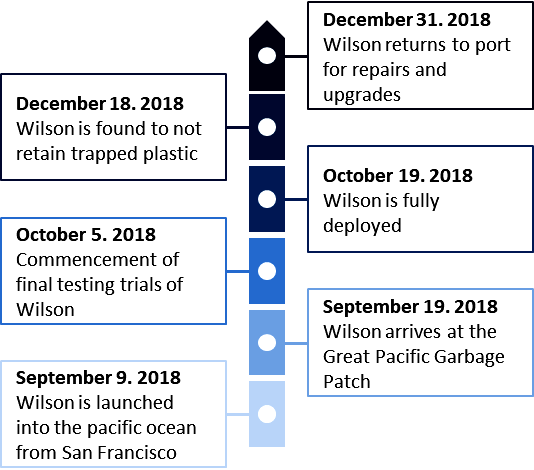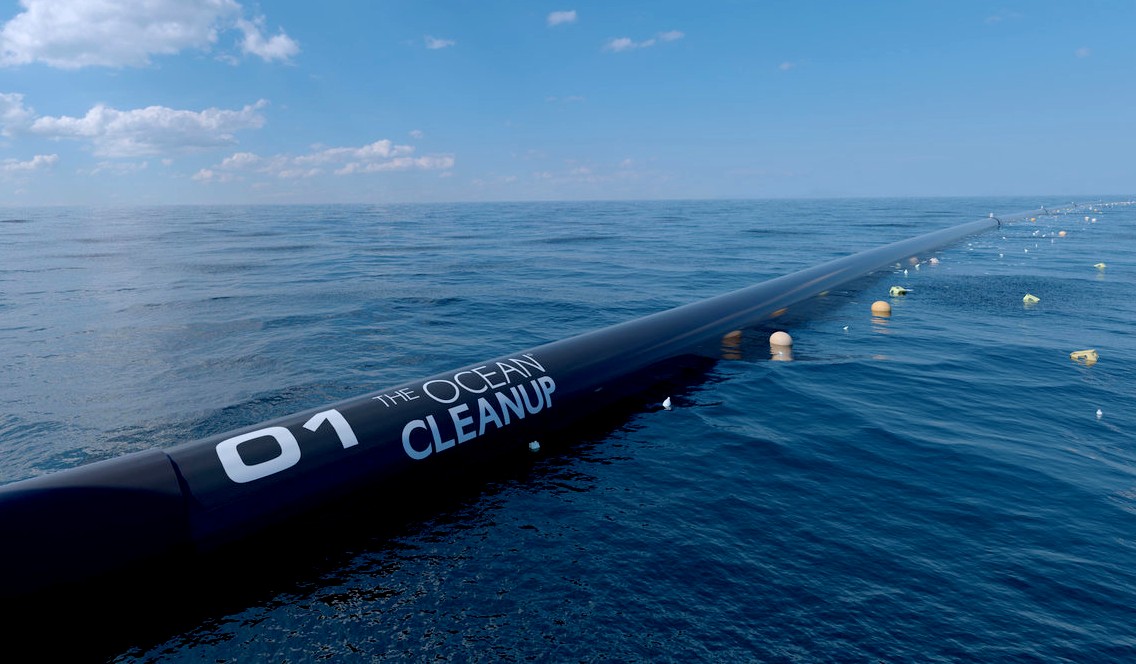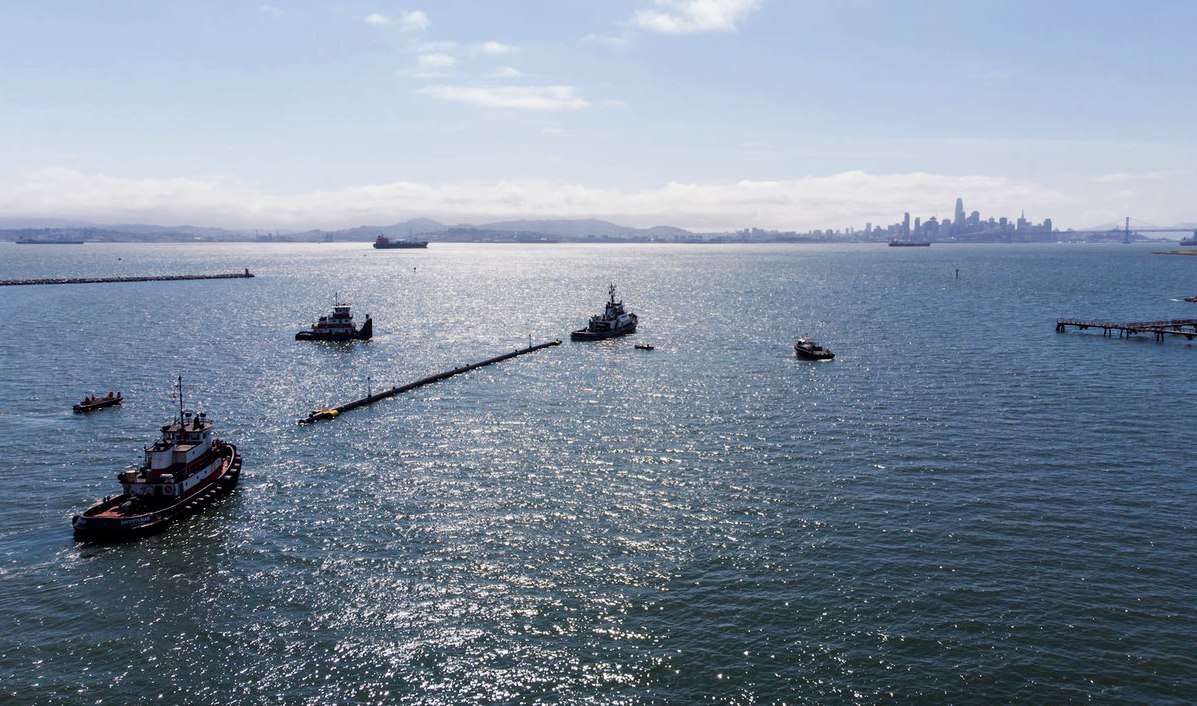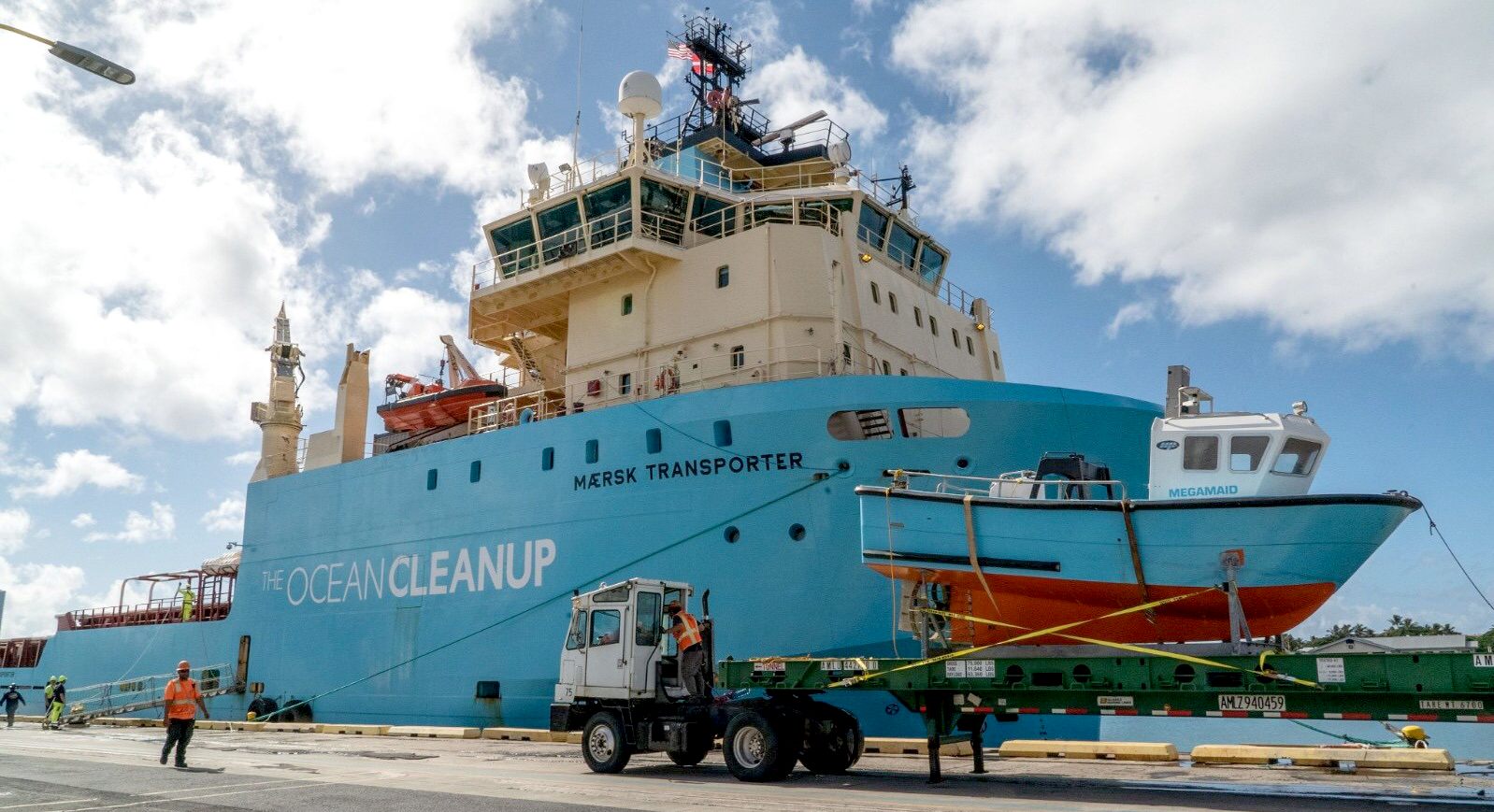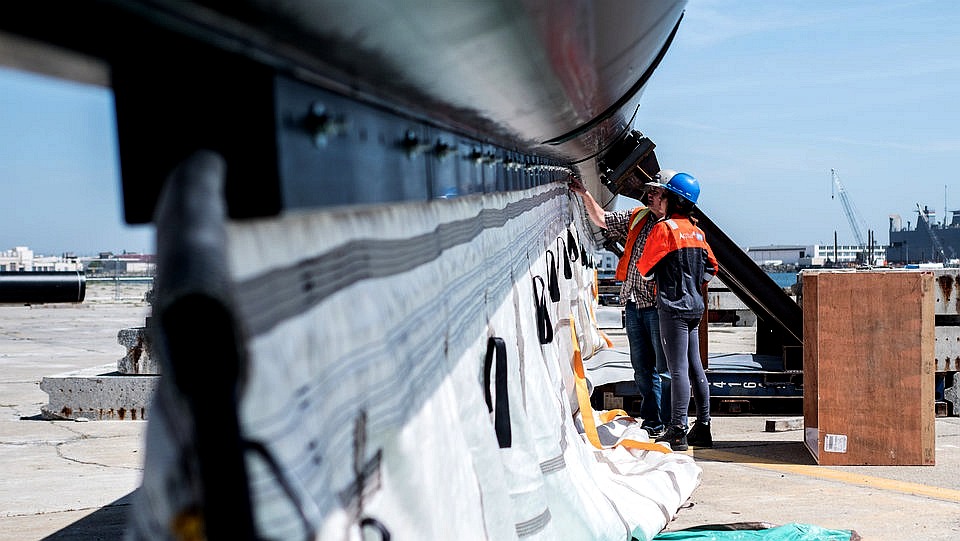|
2018 THE OCEAN CLEANUP PROJECTS
PLEASE USE OUR A-Z INDEX TO NAVIGATE THIS SITE
|
|
The Ocean Cleanup performed more scale model tests in 2018. The sea anchors were removed because the wind moved the system faster than the plastic. The opening of the U would face the direction of travel, which would be achieved by having the underwater screen deeper in the middle of the system, creating more drag.
In July of 2018 the project secured an independent Environmental Impact Assessment.
On September 9, 2018, System 001 (nicknamed Wilson in reference to the floating volleyball in the 2000 film
Cast
Away with Tom
Hanks) deployed from San Francisco. The ship Maersk Launcher towed the system to a position 240 nautical miles off the coast, where it was put through a series of sea trials.
In late December, mechanical stress caused an 18-meter section to detach. Shortly thereafter, the rig began its journey to Hawaii for inspection and repair.
During the two months of operation, the system had captured some 2,000 kg of plastic.
On March 22, 2018, The Ocean Cleanup published a paper in Scientific Reports, summarizing the combined findings from the Mega- and Aerial Expedition. They estimate that the Patch contains 1.8 trillion pieces of floating plastic, with a total mass of 79,000 metric tonnes. Microplastics (< 0.5 cm) make up 94 % of the pieces, accounting for 8% of the mass. The study suggests that the amount of plastic in the patch increased exponentially since 1970.
The Ocean Cleanup is non-government engineering environmental organization based in Netherlands, that develops technology to extract plastic pollution from the oceans.
Boyan Slat is not alone in the fight against ocean plastic. These emerging technologies could all play a part in containing the mountain of plastic that is accumulating on the oceans floors, by recovering floating debris before it sinks. New ideas are welcomed.
PROJECT HISTORY 2012 - 2021
2021 - Qualified success Sept 16 (Reuters)
OCEAN CLEANUP PROJECTS
* Aliance to end Plastic Waste * Boyan Slat's ocean booms * 4Ocean recycled plastic bracelets * Seabin * SeaVax autonomous drones
LINKS & REFERENCE
https://theoceancleanup.com/ 8 September 2018 The World’s First Ocean Cleanup System Launched from San Francisco 22 March 2018 Great Pacific Garbage Patch Growing Rapidly, Study Shows 21 December 2017 Research Shows How Plastic at Sea Turns into Toxic Fish Food 7 June 2017 First Estimate to Quantify Global Plastic Input from Rivers into Oceans 11 May 2017 The Ocean Cleanup Announces Pacific Cleanup to Start in 2018
WIND
AND WAVES
-
The floating boom systems are designed to capture plastics ranging from small pieces just millimeters in size, up to large debris, including massive discarded fishing nets (ghost nets), which can be tens of meters wide.
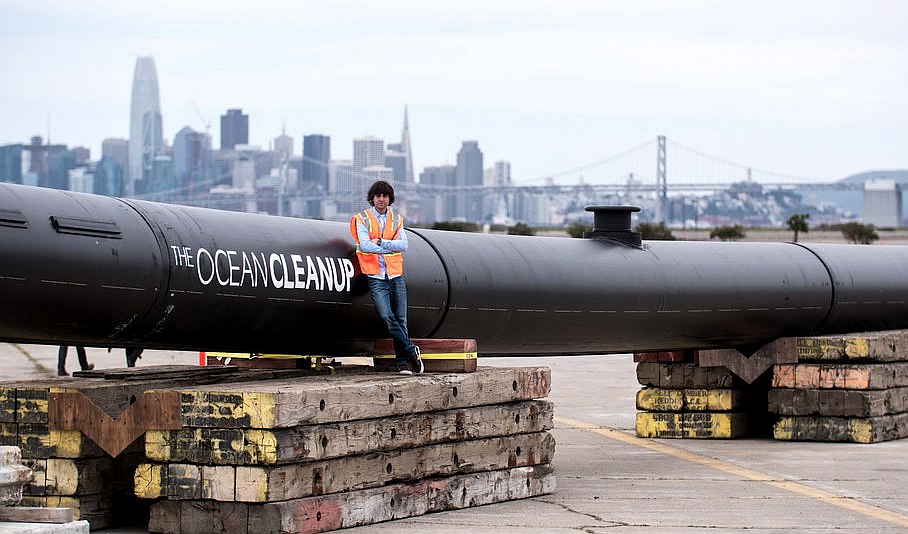 |
|
|
ABS - BIOMAGNIFICATION - CANCER - CARRIER BAGS - COTTON BUDS - DDT - FISHING NETS HEAVY METALS - MARINE LITTER - MICROBEADS - MICRO PLASTICS - NYLON - OCEAN GYRES - OCEAN WASTE PACKAGING - PCBS - PET - PLASTIC - PLASTICS - POLYCARBONATE - POLYSTYRENE - POLYPROPYLENE - POLYTHENE - POPS PVC - SHOES - SINGLE USE - SOUP - STRAWS - WATER
PLEASE USE OUR A-Z INDEX TO NAVIGATE THIS SITE
|
|
|
This website is provided on a free basis as a public information service. copyright © Cleaner Oceans Foundation Ltd (COFL) (Company No: 4674774) 2019. Solar Studios, BN271RF, United Kingdom. COFL is a company without share capital.
|
